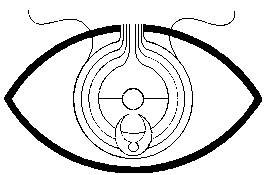
|

|
|
This material was prepared for my deaf-blind patients and their interpreters in 1988-89 at the Smith-Kettlewell Eye Research Institute. My closest co-worker was my secretary and sign language interpreter Lindsay Gimble. Several deaf and deaf-blind persons read and altered the text to better fit the expressions used by deaf persons. Their help is gratefully acknowledged. Since the text is written in plain English I hope that it will be understood also by persons who do not have English as their mother tongue. The original black and white picture information has been enriched with a number of colour pictures. The original black and white pictures were drawn so that, when printed, they would be easy to study by using a 5x stand magnifier. Now when most visually impaired persons will use the enlarged picture on the screen, the size of the pictures no more has a standard size. New pictures have not changed the numbers of the previous pictures but are marked with lower case letters, like Figure 16a and 16b mean that they are added pictures in the same chapter as the original picture 16. The beginning and end of new text are marked with a red exclamation mark !. Those who speak English as their mother tongue may be disturbed by the use of commas in this text. The reason not to comply with the rules of the English language, is to make the text easier for persons who have other languages as their mother tongue.
|
Ophthalmologists and optometrists